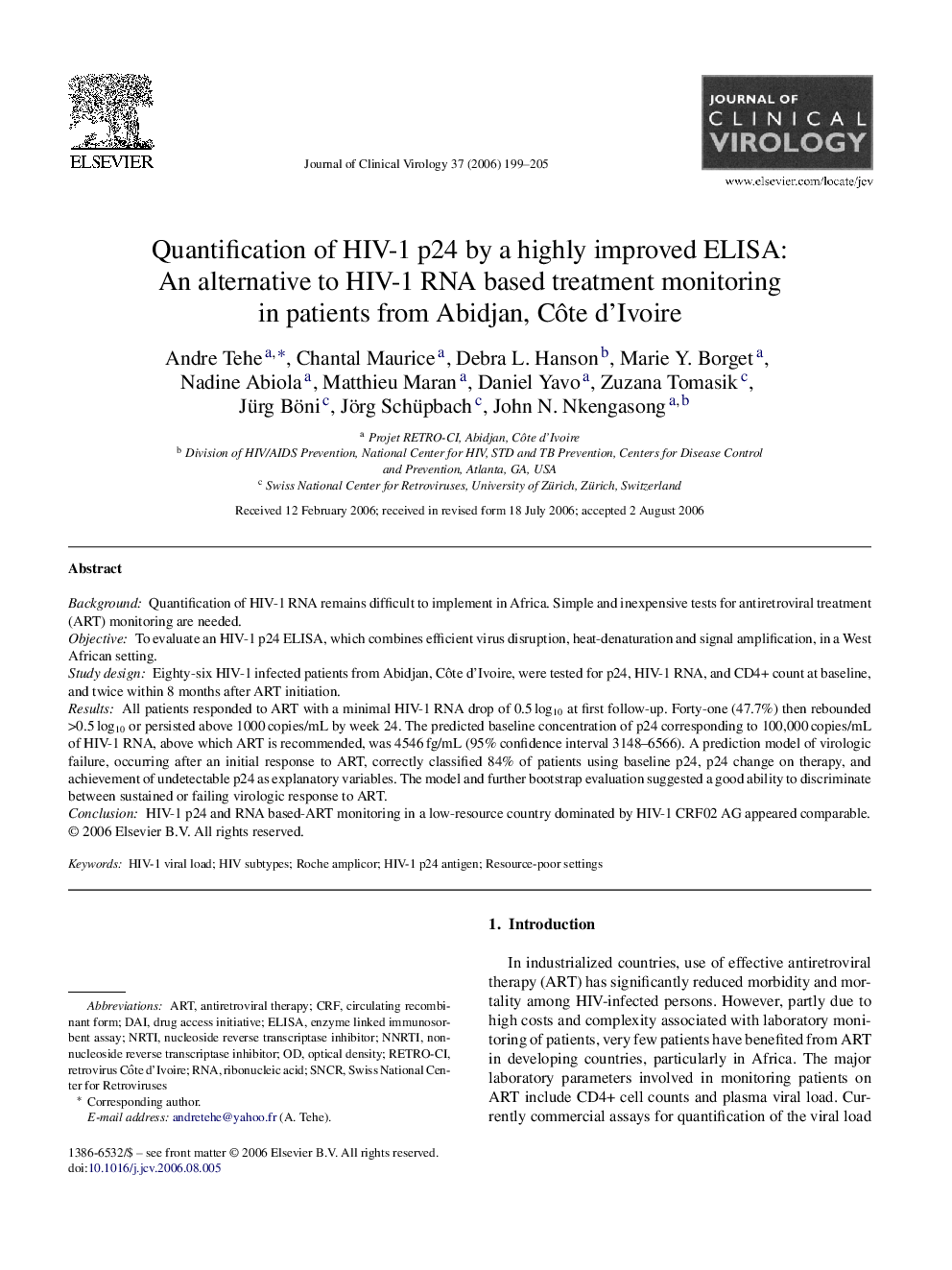| Article ID | Journal | Published Year | Pages | File Type |
|---|---|---|---|---|
| 3370133 | Journal of Clinical Virology | 2006 | 7 Pages |
BackgroundQuantification of HIV-1 RNA remains difficult to implement in Africa. Simple and inexpensive tests for antiretroviral treatment (ART) monitoring are needed.ObjectiveTo evaluate an HIV-1 p24 ELISA, which combines efficient virus disruption, heat-denaturation and signal amplification, in a West African setting.Study designEighty-six HIV-1 infected patients from Abidjan, Côte d’Ivoire, were tested for p24, HIV-1 RNA, and CD4+ count at baseline, and twice within 8 months after ART initiation.ResultsAll patients responded to ART with a minimal HIV-1 RNA drop of 0.5 log10 at first follow-up. Forty-one (47.7%) then rebounded >0.5 log10 or persisted above 1000 copies/mL by week 24. The predicted baseline concentration of p24 corresponding to 100,000 copies/mL of HIV-1 RNA, above which ART is recommended, was 4546 fg/mL (95% confidence interval 3148–6566). A prediction model of virologic failure, occurring after an initial response to ART, correctly classified 84% of patients using baseline p24, p24 change on therapy, and achievement of undetectable p24 as explanatory variables. The model and further bootstrap evaluation suggested a good ability to discriminate between sustained or failing virologic response to ART.ConclusionHIV-1 p24 and RNA based-ART monitoring in a low-resource country dominated by HIV-1 CRF02 AG appeared comparable.
